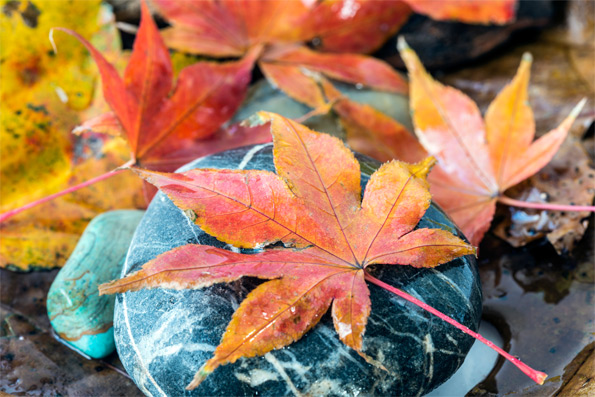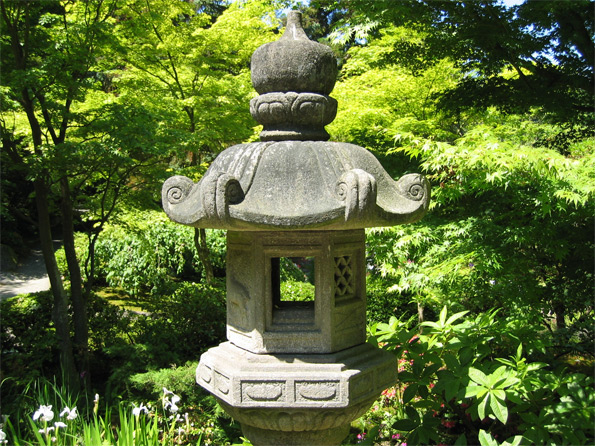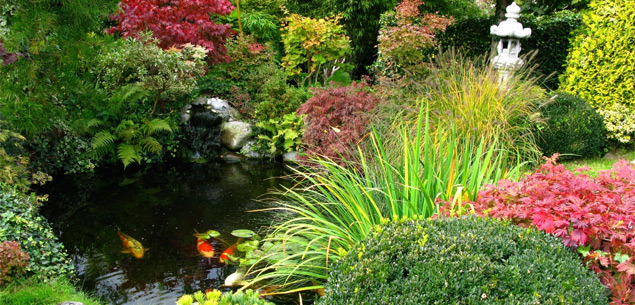You can take the girl out of the mainland, but you can’t take the mainland out of the girl. Or something like that. The point is, subtropical gardens are wonderful – lush and luxuriant and alive – but they’re not especially colourful.
Yes, we have pohutukawa and a few other mildly colourful things, but it’s nothing like the colour that explodes throughout Central Otago in the autumn. And now that autumn’s approaching, I’m getting homesick for colour.
“The only autumn colour you’ll see here will be if the trees are dying,” The Partner, also a mainlander, told me. Not entirely true, but definitely an understandable comment from a man who lived in Central Otago for years and likes nothing more than six inches of snow and a temperature of -10°. Which brings me, in a geographically challenging fashion, to Japan. Or, more precisely, Japanese maples.
Every now and then I see one and tell myself I should plant one. I haven’t yet, because I’ve never been able to visualise how it would fit into our subtropical landscape. But I’m working on it, and an Acer palmatum Sango-kaku is on the shopping list.
Obviously they’re a must in Japanese-style gardens, but if you’re innovative they can be incorporated into most other styles of gardens. You can use one to create a focal point, or use several different varieties together, and you have a touch of the Orient.
One of the varieties with a coloured trunk, like Acer palmatum Senkaki, looks amazing planted against a contrasting wall with night lighting. A weeping maple is a must-have beside water, and one or two dotted through an area of thick planting or bush will light up the landscape.
I was pleased to discover that they’re surprisingly hardy. They tolerate sun – in fact some varieties go green in the shade – but the very pale ones appreciate a bit of shade. They’ll even grow quite well in containers, which opens up options for planting one that’s really special, and showcasing it on a terrace.
Some varieties only grow about 1m tall, so they’re ideal for tiny gardens, and even the biggest, upright varieties rarely grow to more than eight or 10 metres in 50 years.
Good drainage is important; soggy soil can be fatal. But they still need adequate water and mustn’t dry out over summer. Consistent moisture is the key, although well-established trees will tolerate a bit of drought.
They like acid soil and are figure conscious, so don’t over-fertilise or they may punish you by losing the very characteristics you chose them for. Variegated forms, for example, can revert to solid green, and only return to their variegated state when less nitrogen is available. Dogged little sods, then.
If you’re a snipper by nature, you’ll have to keep yourself reined in when it comes to maples. There is a school of thought that because they’re Japanese they’ll enjoy frequent haircuts and look far better with a mohawk or a mullet. A favourite hairstyle is the umbrella shape, but there’s a serious risk of turning your maple into something that looks like a dumpy old lady in a hoop skirt.
The beauty of these plants is in the elegant shape of the trunk and the curves of the limbs. Aim to prune so that the natural structure is revealed. If you simply must snip, minor corrective pruning and training can be done almost any time, although more serious pruning is better done in winter when the tree is dormant.
When my maple gets to the point of needing a trim, I’ll tell myself the same thing I always tell my hairdresser: “I want it cut, but don’t take any off the length. I want it styled, but don’t make it look any different.”

Acer palmatum Hogyoku
MAPLE VARIETIES
Hundreds of named cultivars of Japanese maple have been bred, so it’s easy to choose something that suits you.
Japonicum Aconitifolium, or Fern Leaf maple, has striking maroon and white flowers in the spring, deep green foliage in the summer and spectacular autumn colour. It can grow to around 5m.
Palmatum Sango-kaku is known as the Coral Bark maple, and its outstanding feature is the brilliant colour of the bark. The leaves are a pretty green in summer with gorgeous yellow and gold tones in autumn.
Palmatum Shishigashira, the Lion’s Head maple, has tawny gold colours in autumn. Slow growing and compact, it’s suitable for smaller gardens.
Griseum or Paperbark maple is a hardy tree that originated in China rather than Japan. The outer bark curls back to expose a smooth, cinnamon-coloured inner bark.
Acer palmatum Diss Viridis is gorgeous, with fresh green foliage on graceful pendulous branches. Its autumn tones are gold and yellow.
Acer palmatum Hogyoku is a lovely maple with glossy, green, spring and summer foliage that turns vibrant shades of yellow and orange in the autumn. It has a strong upright growth habit.
Confused? Go to wairere.co.nz, where you’ll find a great selection of maple photos with descriptions, or see landscapedesign.co.nz.
JAPANESE VEGETABLES
Ever wondered what the green bits floating on miso soup are? They are probably myoga ginger, a Japanese vegetable grown not for the rhizome (rootstalk) but for both the shoots and flower buds, which are used in salads and miso soup. It’s new in New Zealand, but Kiwis are getting the hang of both growing and eating it. Unlike the ginger root you buy at the supermarket, the flavour is very mild.
The flower shoots come up from the soil separately from the leafy stems and the pale yellow flowers open at ground level. The unopened buds are harvested just as they appear through the soil and before the flowers start opening – usually in February and through to April if you keep up the picking. Myoga is easy to grow in any friable, composty garden soil. It is deciduous, losing its leaves in May and coming up again from the root mass in spring. This protects it from winter frosts.
It isn’t very susceptible to damage by plants and diseases – perhaps because it hasn’t been around for long enough yet. It doesn’t produce seed, so it won’t spread, although as it’s a perennial it might pay to keep it in its own garden bed. See kokonuggetyumyum.blogspot.co.nz for tips on how to use myoga.

JAPANESE GARDEN DÉCOR
One maple tree will not a Japanese garden make, so if you want your tree to have company from its own culture, settle some like-minded objects alongside. All you need to create a hint of Japan is some raked pebbles and three well-shaped stones stacked one on top of the other – good news for the budget conscious. Garden centres also have plenty of Japanese-style ornaments, from pots to statues.




